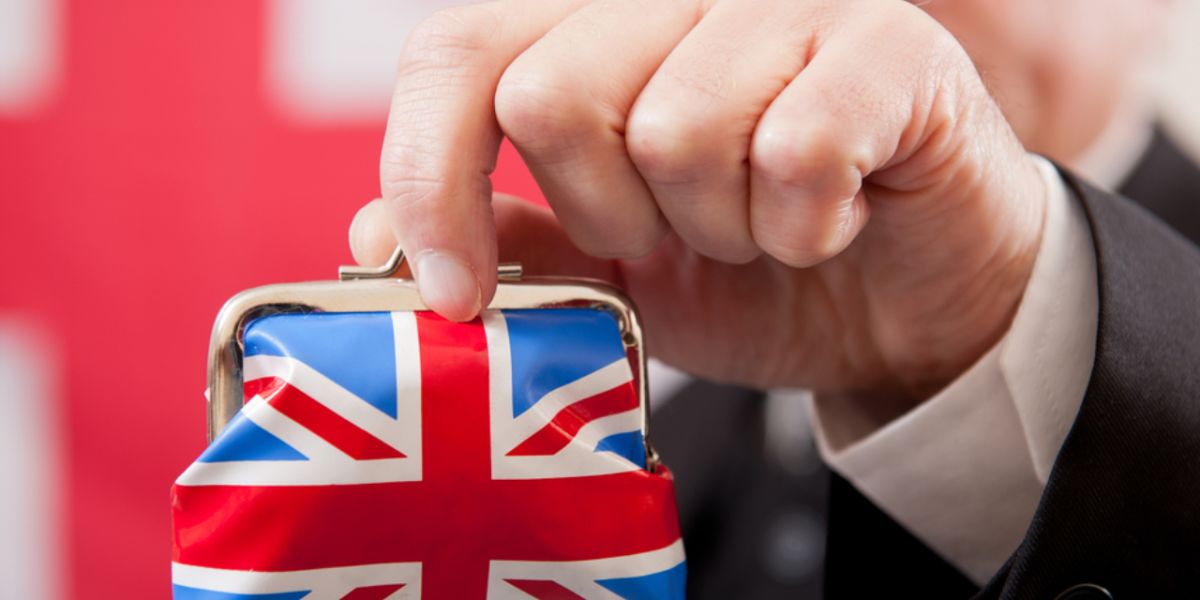
London forms part of the top ten most expensive cities to live in for expats. However, the cost of living varies from one individual to another and from one family to another, depending on their situation and lifestyle. We believe that by earning a decent salary, and with the correct planning and budgeting strategies, you can enjoy your expat life in London, one of the world's most influential cities, and a diverse hub for people from all walks of life.
Rental prices in London
London is the most expensive residential rental market in Europe, with city-centre rents averaging around £2,191 per month. In fact, it costs 35% more to rent in London than in the rest of England and the UK.
But why are rents so high in London? The most significant explanation is that the demand is higher than the supply due to skyrocketing land prices and planning restrictions. Other factors, such as the financial district, nightlife and architecture, also contribute to the increase in demand.
In 2024, average rents in London reached a record quarterly high of £2,694 per month, a 2.5% increase on the previous year's figure. You can expect to pay an average of £886 weekly in South West London. Croydon is known to be one of the cheapest areas, with rent being around £1,200 per month, followed by Sutton and Newham. Kensington and Chelsea are the most expensive areas, with rent as high as £2,716 per month. Generally, if you are a single-income household, you should expect to spend about 41% of your income on housing costs.
Sharing accommodation
One widespread practice amongst tenants in London to reduce living costs is to share accommodation. For example, if you rent a property in North London along with three other tenants, you will pay about £700 each per month. In Croydon, the same type of four-bedroom property will cost you around £550 each per month. If you wish to live centrally but cannot afford to pay the price of a one-bedroom apartment, you can find three more tenants in a similar position to yours and share the cost of a four-bedroom property. This arrangement not only makes living in desirable areas more affordable but also provides an opportunity to build a social network when you first arrive in London.
Useful links:
Median rent prices for each borough
Europe's most expensive city to rent
Utilities in London
The cost of utilities depends on several factors, such as weather conditions, suppliers, types of appliances, house size and position. When viewing properties to rent, you should also try to answer the following questions: Where is the sun at different times of the day, and when is each room lightened or shaded? Where do you spend most of your time, and when? For example, the living room should be the space that gets the most sun in the afternoon, so it's warm and cosy when you return from work and want to relax on your sofa. Also, utility costs depend on the overall amount of time you spend at home and how much of a cook you are. Freelancers and people who work from home tend to pay higher utility bills.
Gas and electricity
London's incumbent suppliers (the default gas and electricity providers in each neighbourhood) are British Gas for gas and EDF for electricity. It is worth knowing that the average unit price under the July 2023 price cap is as follows: 30.11p per kWh for electricity and 7.51p per kWh for gas. However, previous tenants may have changed the incumbent suppliers, or you may wish to start switching to a different supplier offering a better deal.
Six big suppliers compete, and many more small and medium-sized suppliers compete. With houses becoming more energy efficient, people are turning towards suppliers such as Octopus Energy, which is known for its 100% green electricity approach. When choosing an energy supplier, it's important to compare tariffs regularly, as prices and deals change frequently. Many suppliers offer fixed-rate tariffs that can protect you from price increases for a set period.
TV and internet in London
TV and internet packages start at around £30 per month on average. To avoid disappointments, note that parts of inner-city London, such as the boroughs of Enfield, Barnet, Barnett, Lewisham and Westminster, have slower broadband than the national average. There are areas in London that barely reach speeds above 10.11 Mbit/s, as in past years, priority regarding broadband coverage has been given to rural areas. Before committing to a property, it's worth checking the broadband speeds available at that address, especially if you work from home or rely on fast internet for streaming or gaming.
Water supply in London
Finally, there are two methods for paying your water bills. You can either install a water metre and pay only for the water you use, or you can be on a fixed tariff, which means that regardless of how much water you use per month, you pay the same amount. In England, the average water bill is £50 a month (or £603 per year).
Tip:
Use more than one comparison site, as not all suppliers are featured on every site.
Useful links:
Compare gas and electricity suppliers
Council tax in London
When budgeting for the cost of living in London, you should not overlook the council tax. Renters pay ten months a year to fund local services, such as policing and rubbish collection. The cost of council tax differs depending on the borough of London you live in and your circumstances, and it starts from £849 to £2,548 a year. It may be a good idea to discuss the cost of council tax with your property agent or landlord before you book your new home in London, or you can check council tax rates in the boroughs of London you are most interested in.
Council tax discounts and exemptions
If you are two or more adults living in the house, you pay a total council tax bill; if you are a couple, you share the bill between you. If you live alone or with children under 18, full-time students, a diplomat, or someone with a mental impairment, you get 25% off your council tax bill. Full-time students at the University can be exempted from council tax entirely.
Council tax is banded according to the value of your property, with Band A being the lowest and Band H being the highest. Most rental properties in London fall into Bands B to D. You can find out which band your property is in by checking the Valuation Office Agency website.
Good to know:
Register with the City of London to view your council tax account details online.
Important:
Beware of council tax scammers. The City of London doesn't contact council taxpayers over the phone and doesn't request bank details.
Useful links:
Public transport in London
Looking at the London Underground map for the first time may cause you anxiety and confusion - it's understandable, as it is one of the largest underground railway networks in the world and the oldest (155 years old!). The London Underground (or the Tube) has 11 lines, covers 402 km, and serves 272 stations.
London fare zones
The Tube, DLR, London Overground and National Rail are organised into nine zones. The further away you travel, the more you pay. For example, moving from zone 1 to zone 4 is more expensive than moving from zone 1 to zone 2. Fare zone 1 includes central London (e.g., Piccadilly, Charing Cross), where most tourist attractions are, and zones 2 to 6 form concentric circles around zone 1. Buckinghamshire, Essex, Hertfordshire and Surrey counties are in zones 4 or beyond.
Good to know:
Heathrow Airport is in zone 6.
Payment methods
There are three ways to pay for your London journeys: via (i) Oyster card, (ii) contactless debit or credit card, and (iii) Travelcard.
Oyster Card
The Oyster card is a pay-as-you-go system; you add credit to your reusable card either at stations' ticket machines or designated shops with the Oyster sign on the window, and every time you tap in and out of a journey onto the yellow reader, the system calculates the cost and takes money from your card. To obtain the Oyster card, you pay a five-pound refundable deposit, and when you are about to move out of London, you can reclaim your deposit at any ticket machine, as well as an up to £10 cash balance left on your Oyster card.
The good news is that there's a daily price cap, which means that no matter how many rides you take within a day, the total cost of your journeys doesn't exceed the price cap. Traveling in zones 1 and 2 will never cost more than £8.10 per day, regardless of the number of trips. For zones 1 to 3, the price cap is £9.6; for zones 1 to 4, it's £11.70; for zones 1 to 5, it's £13.90; and for zones 1 to 6, £14.90.
Important:
Even when the barriers are open, you must tap in and out your Oyster card to prevent extra charges.
Contactless debit or credit card
The contactless debit or credit card payment was introduced to London travellers in 2014, and it is similar to the Oyster card, with a few differences. So, if you have a debit or credit card that supports contactless technology, you can tap it in and out, exactly as you would do with your Oyster card, to pay for your journey. You may find contactless payment more convenient because you don't have to add credit in advance, as you would do with your Oyster; also, when using your debit or credit card, the total cost of all the journeys you have made in one day is charged at the end of the day. However, exchange charges may apply if your debit or credit card is from a foreign bank.
Important:
If you use one card at the beginning of your journey and a different one at the end, both cards will be charged the maximum fare for that journey.
Travelcards for frequent visitors
Have visitors coming to stay in London? A Travelcard offers unlimited travel in selected zones and excellent value for frequent travellers. Travelcards are paper tickets valid on all buses, Tube, DLR, London Overground, Elizabeth line, National Rail, trams (zones 3 to 6), and offer 1/3 off riverboat fares.
The types of Travelcards available are:
- 7 Day Travelcards: Seven days' travel for the price of five (zones 1 to 2: £40.70; zones 1 to 6: £74.70).
- Monthly Travelcards: 11% saving vs consecutive weekly cards (zones 1 to 4: £224.70).
- Annual Travelcards: 13% saving vs monthly cards, or 23% vs weekly cards (zones 1 to 6: £2,976).
- Day Travelcards: Anytime (all day) or Off-Peak (from 09:30 Mon-Fri, anytime weekends/bank holidays).
- Group Day Travelcard: For groups of 10+ (zones 1 to 6: £11 adult, £5.50 under 16s; zones 1 to 9: £11.60 adult, £5.80 under 16s).
You can buy one at ticket machines and offices at Tube, DLR, London Overground, Elizabeth line and National Rail stations, Visitor Centres or the Tramlink Shop in Croydon. Moreover, you can load a Travelcard onto your Oyster card for seamless travel – your Oyster automatically covers journeys outside your Travelcard zones.
Good to know:
Pay as you go with contactless or Oyster also offers Monday-Sunday capping, giving seven days' travel for the price of five, similar to a 7 Day Travelcard.
London buses and trams
Around 6.5 million people use London's buses every day. Buses in London are cash-free, meaning you must have an Oyster card, a contactless debit or credit card, a Travelcard, a bus and tram pass, or a Freedom Pass (for disabled or passengers aged 60 or over).
Buses and trams don't operate in zones, so Bus and Tram passes are valid on all services, including some outside Greater London, as long as you spot the red roundel symbol on a bus. You can purchase a one-day Bus and Tram Pass for £6, a seven-day pass for £24.70, a monthly pass for £94.90, or an annual pass for £988.
If you use your Oyster card, contactless debit, or credit card to pay as you go for your bus and tram journeys, you will pay £1.75 for each ride, with the daily price cap being £5.25.
Important:
You don't have to tap out your Oyster card when you get off the bus or tram.
Useful links:
TfL Oyster and contactless app
Buying groceries in London
In London, you will find grocery shops and supermarkets for all budgets. If you are looking for affordable produce, then Lidl and Aldi are excellent options for your weekly shopping. Asda, Tesco, Sainsbury's, and Morrisons are more expensive chains but offer more options and are more frequently located around the city.
Waitrose, Co-op, Whole Foods, and Marks & Spencer are on the higher end regarding their prices and are better known for their organic and healthy produce. Online delivery from Ocado and other grocery shops is a convenient way to save time and find the best deals.
Average costs
According to Numbeo in October 2025, here are updated average prices for frequently bought items in London:
- Milk (1 litre), £1.29
- Loaf of fresh white bread (500g), £1.57
- Rice (white, 1kg), £1.84
- Eggs (12 large), £3.56
- Local cheese (1kg), £8.20
- Chicken fillets (1kg), £6.45
- Beef round or equivalent (1kg), £11.84
- Apples (1kg), £2.49
- Bananas (1kg), £1.29
- Oranges (1kg), £2.37
- Tomatoes (1kg), £2.62
- Potatoes (1kg), £1.19
- Onions (1kg), £1.34
- Lettuce (1 head), £1.05
- Bottled water (1.5 litre), £1.34
- Bottle of wine (mid-range, 750ml), £8.50
- Domestic beer (500ml bottle), £2.42
- Imported beer (330ml bottle), £3.01
Monthly grocery budget
On average, a single person in London spends £200 to £300 per month on groceries if they cook regularly. Shopping at budget supermarkets like Lidl or Aldi, or exploring local markets, can reduce this to under £200 per month. Families of four can expect to spend between £600 and £800 per month, depending on dietary preferences and shopping habits.
Farmers' markets
If you are looking to get affordable, fresh, and in-season fruits and vegetables, then do your research on London farmers' markets, as it's very likely there's a market near you. Popular farmers' markets in London are the Saturday market in Balham and South Kensington and the Sunday market in Islington and Walthamstow.
Farmers' markets aren't merely dedicated to fruit and veg; you can also buy dairy products, meat, fish, pastries, honey, flowers, and cooked local foods.
Shopping at farmers' markets not only supports local producers but also provides an opportunity to discover seasonal British produce and speciality items you won't find in supermarkets.
To lower your monthly grocery costs, look for the deals on offer, usually in big supermarkets. Also, if you know that you will be shopping mainly from a particular store, obtain the store's loyalty card for discounts and points. Many supermarkets also have their own-brand products that are significantly cheaper than branded alternatives without compromising on quality.
Useful link:
Eating out and entertainment in London
From restaurants, bars, music, and events to museums, theatre, and art galleries, London's vibrant entertainment scene will never cease to amaze you. Whether you want to spend the day in the library, go to the opera, or do a yoga class to reconnect with your body and soul, London has your back. Understandably, some activities cost more than others, but one thing is sure - regardless of your budget, you will never run out of things to do and see in London.
Dining out in London
Eating out costs more in London than in other European cities, which is partly due to the high rents that businesses have to pay. The only way to cover those expenses is by charging customers more. The main course for an average restaurant meal is £30 per person, though prices vary widely depending on the type of restaurant and location. A typical fast food meal costs around £8 at McDonalds or Burger King, while coffee lovers can expect to pay an average of £3.60 for a cappuccino.
London's diverse food scene reflects its multicultural population, with cuisines from every corner of the world available. From Michelin-starred restaurants in Mayfair to authentic curry houses in Brick Lane, street food markets in Camden to traditional fish and chips shops, the variety is endless. Budget-conscious diners can find good meals for £12 to £18 at ethnic restaurants, whilst takeaway meals from kebab shops or similar establishments cost about £7 to £9.
Good to know:
In London, you are expected to tip in restaurants between 10% and 15% for decent service if it's not automatically added to your bill. However, you can refuse to tip if you are unhappy with the service. Black cab drivers in London expect to receive an additional 10% of the fare.
Entertainment costs in London
Cinema tickets in London averaged £7.73 in 2024, though prices vary by cinema and location. Budget cinemas like Peckhamplex offer tickets for as low as £5.99, whilst premium central London venues charge more. Many chains offer discount schemes, including Meerkat Movies (2-for-1 on Tuesdays and Wednesdays) and cheaper Monday screenings at independent cinemas.
For West End theatre, most tickets are sold at £56 or less, with over a quarter under £35. During special promotions like London Theatre Week, tickets are available at £15, £25 and £35 across a wide range of productions. However, premium seats for top shows can reach £154 on average, with some productions featuring big-name celebrities commanding prices as high as £300. The TKTS booth in Leicester Square offers last-minute discount tickets for same-day and next-day performances.
The monthly fee for a fitness club subscription is around £50, and a cocktail costs about £12. However, if you want to enjoy your drink on a hotel's rooftop bar in the heart of Mayfair, for example, the price can be £18 or more.
Free entertainment in London
What we like about London is that there's plenty of free entertainment for all ages and tastes. Some of the world's most prominent museums, such as the Museum of London and the Natural History Museum, the British Museum, the Tate Modern, The National Gallery and the Victoria and Albert Museum are free of charge.
If you are an outdoorsy expat, there are many beautiful parks in London, such as the 350-acre Hyde Park, the Kensington Gardens, or the Wimbledon Common, where you can walk, jog, cycle, or enjoy a picnic. There are also many free festivals in London, especially during the summer; the Notting Hill Carnival is London's biggest street party every year on the last weekend of August, attracting over a million visitors.
Other free activities include attending free concerts at churches such as St Martin-in-the-Fields, exploring the historic markets like Borough Market and Portobello Road, walking along the South Bank, and enjoying the street performances in Covent Garden.
Useful link:
We do our best to provide accurate and up to date information. However, if you have noticed any inaccuracies in this article, please let us know in the comments section below.








